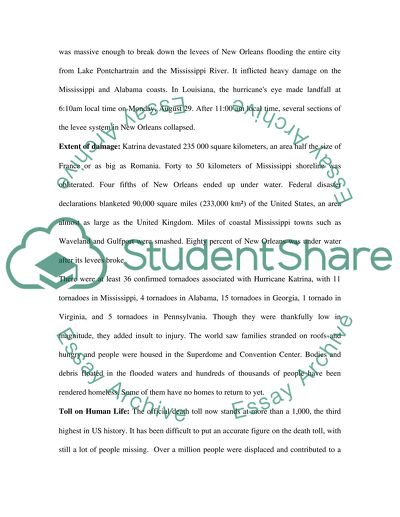Cite this document
(The Devastation after Hurricane Katrina Case Study, n.d.)
The Devastation after Hurricane Katrina Case Study. Retrieved from https://studentshare.org/social-science/1524903-hurricane-katrinathedevastation
The Devastation after Hurricane Katrina Case Study. Retrieved from https://studentshare.org/social-science/1524903-hurricane-katrinathedevastation
(The Devastation After Hurricane Katrina Case Study)
The Devastation After Hurricane Katrina Case Study. https://studentshare.org/social-science/1524903-hurricane-katrinathedevastation.
The Devastation After Hurricane Katrina Case Study. https://studentshare.org/social-science/1524903-hurricane-katrinathedevastation.
“The Devastation After Hurricane Katrina Case Study”, n.d. https://studentshare.org/social-science/1524903-hurricane-katrinathedevastation.


